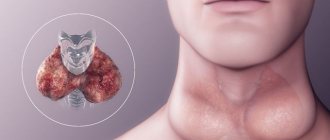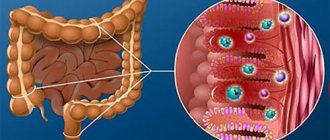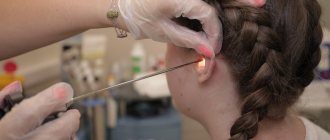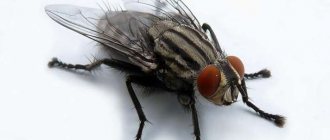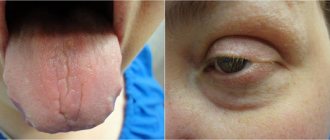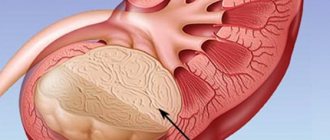Obstructive bronchitis in children is an inflammatory process in the bronchial tree, which occurs with symptoms of obstruction. Leads to a narrowing of the lumen of the bronchi, which causes a disruption in the passage of air through them. It occurs in children from one to six years of age, and is the most common childhood disease (of all that affects the respiratory system). In some cases, inflammation may recur several times. Those children who attend kindergarten are the most susceptible to illness.
- Etiology
- Varieties
- Symptoms
- Diagnostics
- Treatment
- Prevention
Obstructive bronchitis in infants is much less common, but its course is more complicated. May cause choking, so parents should closely monitor their child's breathing, especially during sleep. The main reason for its appearance is considered to be allergic reactions. The difficulty in diagnosing such a disease in children under one year old is that the baby cannot say what exactly is bothering him. Difficulty breathing and the release of mucus released when coughing can lead to serious consequences for the child’s health. But with timely consultation with a doctor and qualified treatment, complications can almost always be avoided.
According to statistics, only a quarter of all cases of bronchitis are obstructive. If the symptoms of the disease are observed for three weeks or more, then the disease develops from an acute form to a chronic one.
This disease is easily treatable, especially in the early stages. Therapeutic remedies can be versatile, but most often doctors resort to using traditional medicine techniques in tandem with folk remedies. Surgical intervention is not practiced.
Etiology
One of the main and most common causes of obstructive bronchitis in children is the child’s infection with influenza or ARVI. Other causes of this disease include:
- a wide variety and untimely treatment of diseases caused by viruses;
- allergy;
- worms;
- an unhealthy lifestyle of a woman during pregnancy, abuse of alcohol and nicotine, which greatly affects the child and leads to congenital pathologies of the structure of organs;
- inhalation of tobacco smoke by a child;
- environmental pollution;
- a foreign small object or piece of food in the respiratory tract;
- weakened immune system;
- prematurity and premature birth.
Mechanism of bronchial obstruction
Clinical manifestations
The patient's complaints depend on the severity of bronchial obstruction. Bronchospasm may be preceded by a so-called prodrome. It manifests itself as a feeling of chest congestion. In case of bronchial asthma or another allergic disease, the trigger situation may be contact with an allergen.
Suddenly there is shortness of breath. It is expiratory in nature. This means that the adult or child has difficulty breathing out. Even strong forcing does not lead to relief. Propaedeutics of internal diseases calls this condition an attack of suffocation.
In bronchial asthma, this syndrome occurs most clearly. The skin becomes somewhat bluish due to hypoxia. The rhythm of breathing and heartbeat increases. Shortness of breath reaches such a degree that the frequency of respiratory movements exceeds 20 per minute.
Wheezing occurs that can be heard even at a distance. The patient himself rests his hands on the bed in order to facilitate exhalation, activating the activity of the auxiliary respiratory muscles. The child often flares his nostrils. This slightly increases the volume of inhaled and exhaled air. Broncho-obstructive syndrome in children is more severe than in adult patients.
On physical examination, percussion shortening of sound is noted over all pulmonary fields. In severe situations, the supraclavicular fossa sinks. This indicates severe respiratory failure. The auscultatory picture is quite typical. Dry whistling sounds can be heard everywhere. They may also be accompanied by moist rales. The exhalation phase is noticeably lengthened. The inhalation is normal and flows quickly.
Unlike cardiac asthma due to left ventricular failure in bronchial asthma, the horizontal position of the patient does not aggravate his condition. The use of diuretics (unloading the pulmonary circulation), as well as the use of cardiac glycosides, does not bring him relief.
A cough may be bothersome before the development of an attack of suffocation. In COPD or asthma, an exacerbation can be caused by an acute respiratory infection of viral or bacterial etiology. Therefore, cough precedes bronchial obstruction. Against the background of suffocation, the cough is dry and unproductive. The sputum is released very heavily and has a glassy character.
Varieties
According to the course of the inflammatory process, obstructive bronchitis occurs:
- acute – after recovery there is no re-expression of the disease;
- chronic - with repeated remission, which can occur several times throughout the year.
Based on the symptoms, the disease is divided into three stages:
- light. Signs of manifestation are: mild cough and general weakness of the body;
- moderate severity – symptoms include a slight headache and fever;
- very severe – in which there are signs of suffocation and loss of consciousness. This type includes allergic obstructive bronchitis in children.
Causes of broncho-obstructive syndrome
The reasons for the development of biofeedback are varied. The main ones are:
- spasm of smooth muscle fibers in the bronchial wall;
- mechanical blockage of its lumen with foreign bodies, as well as pus or blood;
- increased secretion of viscous mucus and its accumulation in the bronchial lumen;
- tracheobronchial dyskinesia;
- inflammatory process in the lower respiratory tract;
- swelling of the bronchial wall (with allergic reactions, toxic effects);
- the presence of scar changes and fibrosis along the bronchial tree;
- endobronchial tumors or compression of the bronchus from the outside;
- loss of elasticity in the lungs and collapse of the small bronchi on exhalation.
Symptoms
The first symptoms of obstructive bronchitis appear on the third day after the main inflammatory process has subsided, and in children under one year of age - on the next.
Among the most common symptoms are:
- heat;
- cough (especially severe at night or in the morning);
- vomiting (appears only in infants);
- sleep disturbance;
- acute headache;
- pain between the shoulder blades;
- sputum. It may either not be released at all, or in a very small amount (with a yellowish tint);
- lethargy and weakness of the body;
- high anxiety and restlessness of the child;
- nasal congestion;
- redness of the throat;
- difficult and rapid breathing;
- severe shortness of breath;
- short-term loss of consciousness;
- lack of appetite;
- blueness of the tip of the nose and ears, lips and nails in infants who are under one year old;
- wheezing and whistling when inhaling.
The above symptoms are especially dangerous for children less than a year old, since the small body has not yet become stronger and immunity has not been established. This becomes the reason for the rapid progression of obstructive bronchitis. Difficulty breathing is very dangerous for the baby, as it can lead to suffocation and death of the baby.
Obstructive bronchitis in children
Obstructive bronchitis in children, symptoms
With this form of bronchitis, children most often experience the following symptoms:
- Difficulty breathing, heavy. When you sigh, a whistling sound is heard in the bronchi, and shortness of breath is possible.
- An increase in body temperature, on average above 38, to 39.4 degrees. Lethargy, drowsiness, and aching joints are observed.
- Dry, barking cough. Sputum is not profuse. The intensity of the cough increases in the afternoon and at night.
- Rhinitis.
- Possible swelling of the throat.
- There may be pain in the area between the shoulder blades.
If we are talking about children under one year of age, then they typically have the following symptoms:
- The baby is restless and capricious.
- Intense cough that can lead to vomiting.
- Breathing is hoarse, noisy, whistling when inhaling.
- It is possible to increase the volume of the chest.
- Rhinitis.
- Hoarse crying.
- A sharp increase in body temperature.
Diagnostics
For an experienced doctor it will not be difficult to identify the disease. Consultation and diagnostics are carried out by:
- pediatrician;
- pediatric pulmonologist;
- allergist;
- otolaryngologist.
During diagnosis, the doctor examines the child, listens to his breathing, listens to complaints about the state of health and signs of illness from the baby’s parents, and prescribes tests:
- blood chemistry;
- laboratory examination of sputum;
- allergy tests to identify allergens;
- radiography, but only when the child is one year old; before that, it is better not to carry out such a procedure for children;
- spirometry - to determine the functioning of the lungs.
Based on the results obtained, the degree of the disease is determined and treatment is prescribed. During diagnosis, treatment options and the possibility of using folk remedies are discussed.
Features of pathology9
Broncho-obstructive syndrome is not an independent disease; this pathology occurs as a result of certain diseases and is a whole complex of symptoms that worsen a person’s life. It occurs as a result of deterioration in the passage of air masses through the bronchial tree. It is believed that broncho-obstructive syndrome is mostly a childhood disease. After all, it is diagnosed in 35-45% of children, especially under the age of 3 years, but it also happens in adults.
Prognosis for recovery depends directly on the primary cause of the syndrome. In some cases, bronchial obstruction is completely curable, in others it leads to irreversible consequences.
Broncho-obstructive syndrome (BOS) is a complex of symptoms of organic origin, characterized by various disorders in the functioning of the respiratory system
Treatment
At the first manifestation of symptoms of obstructive bronchitis in a baby, you should immediately seek help from a doctor. Any delay in treatment, especially acute bronchitis, and elimination of symptoms can lead to heart failure, respiratory diseases, suffocation and death of the child.
Treatment at the initial stage can be carried out by parents on their own, but only after consulting a doctor, and if the symptoms are mild. It consists in:
- ensuring plenty of fluids;
- eliminating dry air in the room (temperature should not exceed twenty-two degrees);
- normalization of body temperature. If it has risen to thirty-eight degrees, then antipyretics can be given;
- warm baths (but no more than fifteen minutes);
- mustard plasters;
- massage;
- inhalations with medicinal substances;
- folk remedies.
Scheme for applying mustard plasters
Obstructive bronchitis can be treated with medications only when the child has an allergic type of illness. It is also allowed to use them to eliminate concomitant diseases.
For treatment, it will be favorable to follow a non-strict diet, which consists of:
- eating raw fruits and vegetables;
- adding vitamins to the diet;
- limit your child from chocolate, honey, citrus fruits and all kinds of hot spices;
- reducing intoxication of the body with large amounts of drinking, such as fruit drinks, uzvars, herbal teas, freshly squeezed juices, mineral water.
Traditional methods of treating obstructive bronchitis consist of decoctions and tinctures:
- spring primrose root;
- elecampane;
- black radish and honey;
- onions infused with honey;
- tangerine zest;
- buckwheat and lingonberry flowers;
- sage with milk;
- fennel;
- coltsfoot;
- marshmallows;
- ginger tea;
- almonds and chicory.
Folk remedies should only be combined with other methods of treatment, and not used as the only way to eliminate the disease.
Possible complications
If you do not consult a doctor in time and do not receive qualified help or do not adhere to clinical recommendations, the following complications are possible:
- development of heart failure;
- pneumonia;
- bronchial asthma;
- general intoxication, if the cause was parasitic influences;
- asphyxia;
- death.
BSO leads to serious breathing problems, causing the inability of air masses to pass through the bronchi. The disease can have reversible and irreversible consequences. The earlier the disease is detected, the better for the patient.
Prevention
Prevention of obstructive bronchitis in children should be carried out by parents. First of all, it is aimed at eliminating any factors that may contribute to the manifestation of symptoms:
- maintaining air humidity in the room in which the child is located;
- to refuse from bad habits;
- timely treatment of diseases that may contribute to the occurrence of bronchitis;
- protect the child from contact with people infected with colds;
- strengthening the immune system;
- hardening;
- premature prevention of influenza and ARVI in winter;
- Examine the child in the clinic several times a year.

